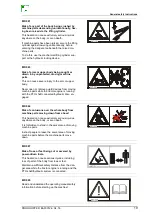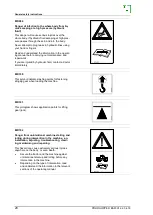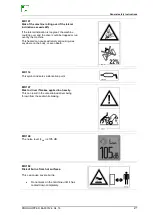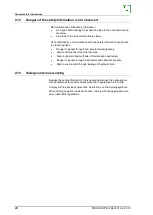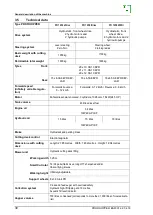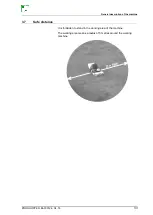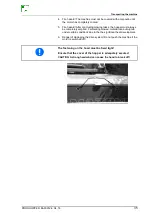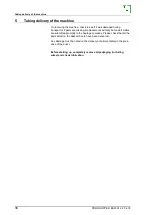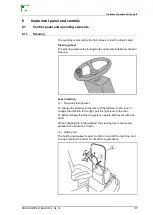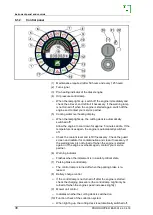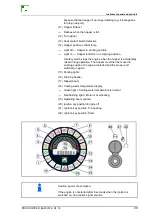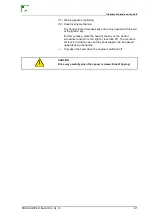
General safety instructions
26
PROFIHOPPER BAF0012.6 04.18
Machine transportation
•
When using public highways, national road traffic regulations must
be observed.
•
Before moving off, check:
ο
the lighting system for damage, function and cleanliness
ο
the brake and hydraulic system for visible damage
ο
that the parking brake is released completely
•
Ensure that the machine has sufficient steering and braking power.
•
Check the brake power before moving off.
•
When driving around corners, allow for the wide overhang and the
centrifugal mass of the machine.
•
Before moving off, move all the swivel machine parts to the
transport position.
•
Check that the transport equipment, e.g. lighting, warning equip-
ment and protective equipment, is correctly mounted on the ma-
chine.
•
Adjust your driving speed to the prevailing conditions.
2.16.2
Hydraulic system
•
The hydraulic system is under a high pressure.
•
Ensure that the hydraulic hose lines are connected correctly.
•
Make sure the hydraulic system is not pressurised when connecting
hydraulic hose lines.
•
It is forbidden to block the operator controls which are used for hy-
draulic and electrical movements of components, e.g. folding, swiv-
elling and pushing movements. The movement must stop automati-
cally when you release the appropriate control. This does not apply
to equipment movements that:
ο
are continuous or
ο
are automatically locked or
ο
necessarily require an open centre or pressure position to oper-
ate correctly
•
Before working on the hydraulic system
ο
Switch off all machine parts
ο
Depressurise the hydraulic system
ο
Switch off the engine
ο
Apply the parking brake
ο
Remove the ignition key
•
Have the hydraulic hose line checked at least once a year by a spe-
cialist for proper functioning.
•
Replace the hydraulic hose line if it is damaged or worn. Only use
original
AMAZONE
hydraulic hose lines.
•
The hydraulic hose lines should not be used for longer than six
years, including any storage time of maximum two years. Even with
proper storage and approved use, hoses and hose connections are
subject to natural ageing, thus limiting the length of use. However, it
may be possible to specify the length of use from experience val-
ues, in particular when taking the risk potential into account. In the
case of hoses and hose connections made from thermoplastics,
other guide values may be decisive.








